Following our enchanting journey along the legendary Chao Phraya River, which offers a unique perspective of Bangkok’s vibrant life, it’s time to delve into one of the city’s most spectacular landmarks. Today, I’m thrilled to share an in-depth account of my visit to Wat Arun Ratchawararam Ratchawaramahawihan, more commonly known as Wat Arun, or the Temple of Dawn. This temple isn’t just a sight to behold; it’s an experience that captures the essence of Thai spiritual artistry and history.
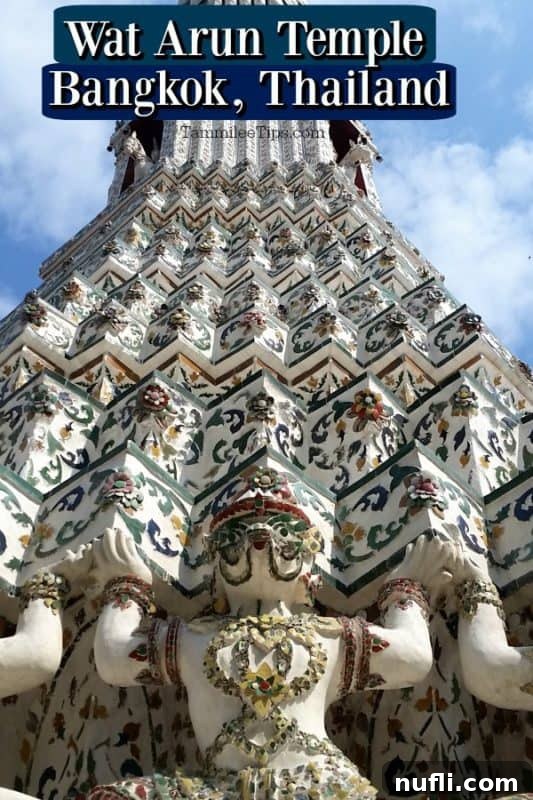
Planning Your Trip to Wat Arun and Beyond? Here are some quick resources:
- 🏨 Find the Best Hotels and Vacation Rentals in Bangkok
- 📍 Book Essential Bangkok Tours and Experiences
Discovering Wat Arun: Bangkok’s Iconic Temple of Dawn
Nestled on the west bank of the Chao Phraya River in the Thonburi district, Wat Arun Ratchawararam Ratchawaramahawihan, affectionately known as Wat Chaeng by locals, stands as a testament to Thailand’s profound architectural and artistic heritage. Its official name, often shortened to Wat Arun, beautifully translates to ‘The Temple of Dawn,’ a moniker said to derive from the stunning first light that catches its central spire at sunrise, painting it in a magnificent golden glow. While its full grandeur is visible from the river, stepping onto its grounds offers an even more immersive experience.
During my visit, a significant portion of the temple complex, particularly the majestic central prang, was undergoing meticulous rehabilitation. Our knowledgeable guide explained that this extensive work is a continuous effort to preserve the temple’s delicate beauty and structural integrity, ensuring future generations can marvel at its splendor. Far from detracting from the experience, witnessing this dedication to conservation added another layer of appreciation for this sacred site.
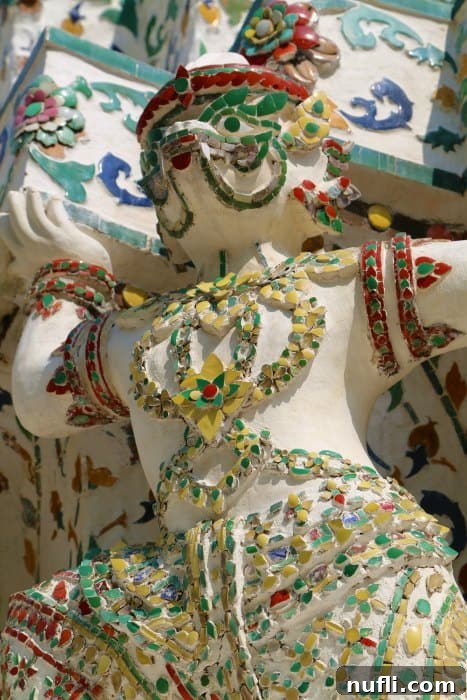
Architectural Grandeur and Intricate Details
The defining feature of Wat Arun is its towering central prang (Khmer-style tower), which soars majestically towards the sky. Surrounding it are four smaller satellite prangs, each contributing to the temple’s distinctive silhouette. What truly sets Wat Arun apart is its incredibly intricate ornamentation. The surfaces of these prangs are adorned with millions of pieces of colorful, broken porcelain and seashells, creating breathtaking floral patterns and mythological scenes. These vibrant mosaics shimmer under the sunlight, showcasing an astonishing level of craftsmanship and artistic dedication.
Our guide highlighted that much of this porcelain, far from being factory-made, was donated by local people – fragments of old ceramic bowls and dishes that found a new, sacred purpose. This unique technique transforms everyday objects into a monumental work of art, telling a story of community involvement and reverence. The meticulously arranged patterns, especially the flowers found above and below the “demon bears” (mythological figures), are said to evoke the rich vegetation of Mount Meru, the legendary cosmic mountain and home of the gods in Buddhist and Hindu cosmology, symbolizing a connection between the earthly and the divine.
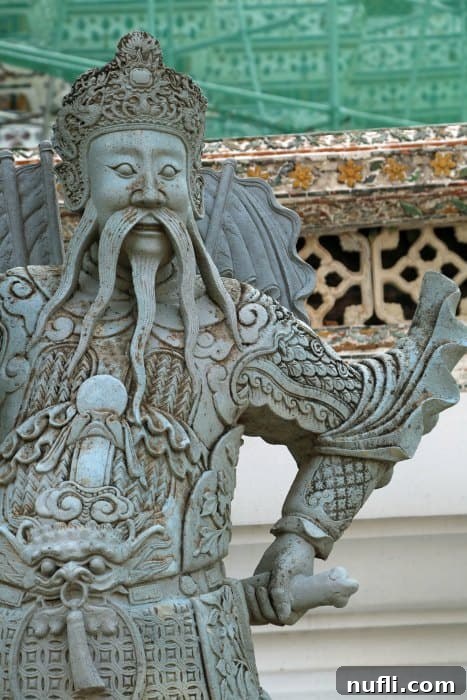
As you ascend the terraces of the central prang, you’ll encounter fascinating elements, including robust Chinese guard statues. These stone sentinels, often depicted in traditional attire, stand watch at the eight entrances to the temple area, adding a touch of cross-cultural influence to the Thai Buddhist architecture. Their presence is a reminder of Thailand’s historical trade links with China and the artistic exchanges that shaped its rich heritage.
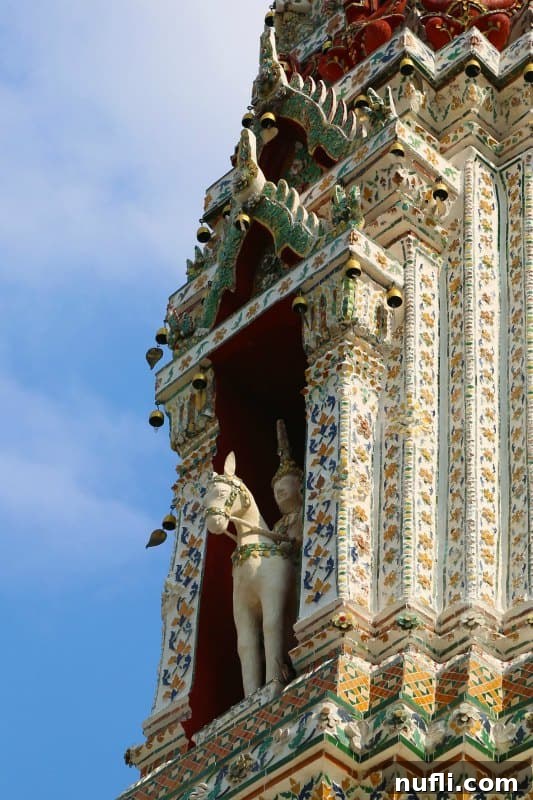
Within the niches of each of the four minor prangs, another captivating detail awaits: statues of Nayu, the revered Hindu god of wind, depicted dynamically on horseback. These exquisite sculptures, though smaller in scale, contribute significantly to the temple’s rich narrative, illustrating the blend of various mythological traditions that influenced ancient Thai art and belief systems.
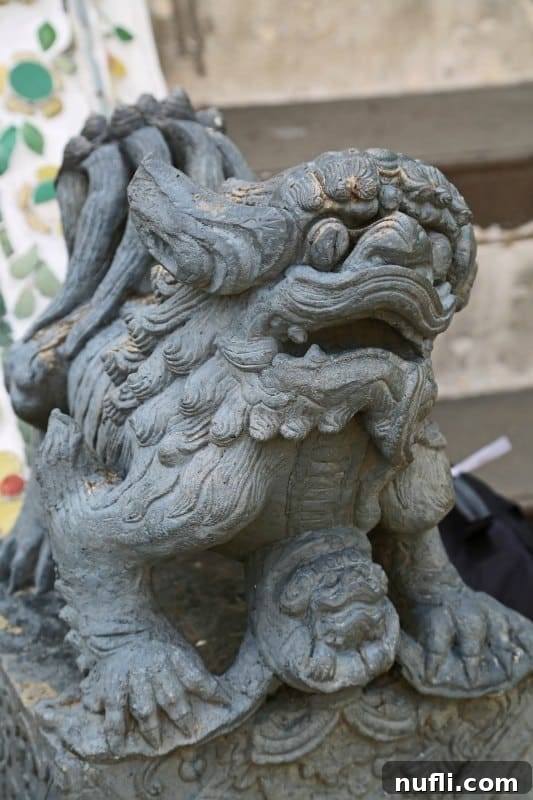
An Unforgettable Visitor Experience
Even with parts of the Central Monument undergoing restoration, Wat Arun remains an incredibly rewarding destination. The sheer scale of the temple complex, combined with its meticulous details and spiritual ambiance, guarantees amazing photo opportunities from every angle. The ongoing rehabilitation efforts, while obscuring some parts, highlight a commitment to preserving cultural treasures, allowing visitors to appreciate the long-term vision for this historic site. Our guide couldn’t provide a specific end date for the work, as such projects often extend over several years, but rest assured, the beauty of Wat Arun shines through regardless.
Beyond the main prangs, the temple grounds are dotted with smaller concrete animal statues and intricate architectural elements that invite closer inspection. There are also several small stands on-site where you can purchase souvenirs to remember your visit, grab a refreshing bottle of water, or enjoy a quick snack. A charming tradition here involves renting traditional Thai costumes, allowing visitors to dress up in vibrant regalia and have their photos taken against the stunning backdrop of the temple – an experience many tourists cherish.

Essential Travel Tips for Visiting Wat Arun
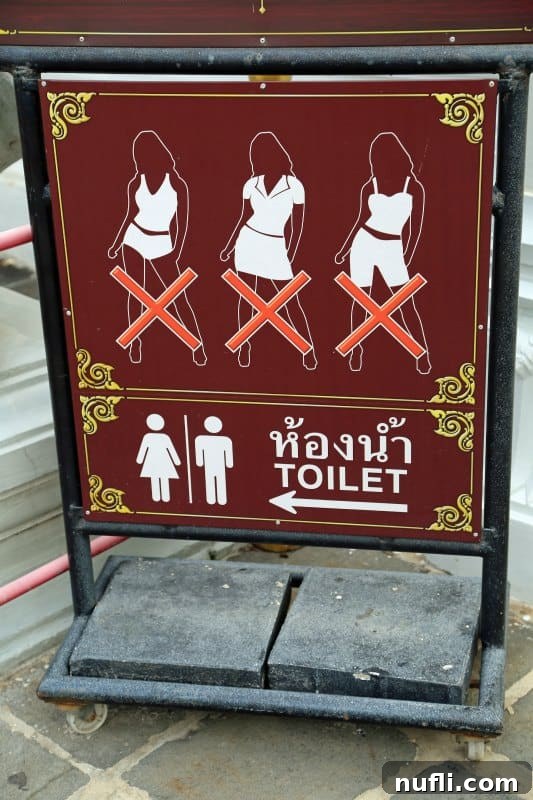
To ensure a respectful and comfortable visit to Wat Arun, here are a few key tips:
- Dress Code: Like all sacred sites in Thailand, a modest dress code is strictly enforced. Visitors must ensure their shoulders and knees are covered. It’s advisable to wear comfortable clothing that adheres to these guidelines, such as long trousers or skirts and shirts with sleeves. If you arrive unprepared, sarongs are usually available for rent at the entrance, but it’s best to come dressed appropriately.
- Operating Hours: The temple complex is generally open every day between 8:00 AM and 5:30 PM. Arriving early in the morning can help you avoid larger crowds and the midday heat, offering a more serene experience and better photo opportunities.
- Entry Fee: There is a nominal entrance fee to access Wat Arun. This fee typically ranges around 100-200 Thai Baht for foreign visitors, which contributes to the temple’s ongoing maintenance and preservation.
- Facilities: A restroom is available on-site, but be prepared to pay a small fee (a few Bhat) for access and toilet paper. It’s always a good idea to carry small denominations of local currency for such conveniences.
- Best Time to Visit: While Wat Arun is stunning at any time, sunrise or sunset offers particularly magical views as the light plays off its porcelain-adorned spires. Viewing the temple from across the river during these times is also highly recommended.
How to Get to Wat Arun
Wat Arun’s riverside location makes it easily accessible by boat, which is an experience in itself:
- From Tha Tien Pier: If you’re visiting other iconic temples like Wat Pho (the Temple of the Reclining Buddha) or the Grand Palace, Tha Tien Pier is conveniently located nearby. From here, you can take a short cross-river ferry for a few Bhat directly to Wat Arun.
- From Saphan Taksin: This is a major transportation hub accessible via the BTS Skytrain (Saphan Taksin station). From Saphan Taksin boat pier, you can catch a Chao Phraya Express Boat (blue flag or orange flag boats are common tourist options) and disembark at Pier 8 (Tha Tien Pier). From Tha Tien, a small shuttle boat will take you across the river to Wat Arun. This offers a scenic journey along the river, showcasing Bangkok’s bustling waterways.
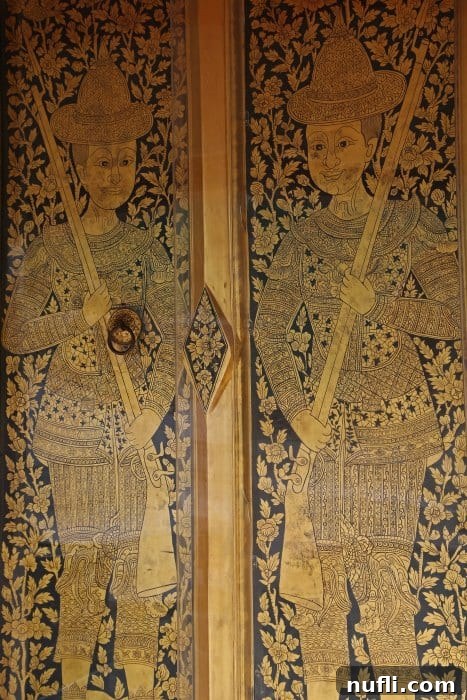
For those who prefer a guided experience or wish to understand the historical context more deeply, consider booking a dedicated tour. Many tours combine a visit to Wat Arun with other Bangkok highlights, providing seamless transportation and expert insights. You can find a variety of highly-rated Temple of the Dawn (Wat Arun) Tours here.
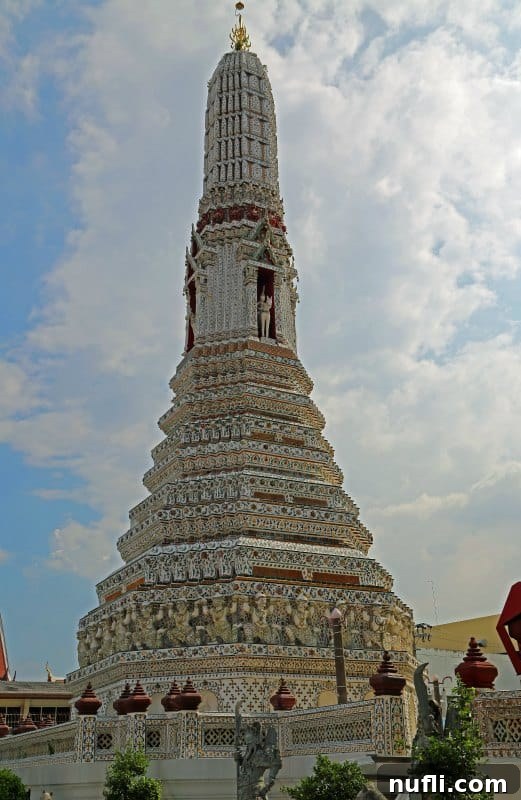
In conclusion, Wat Arun is far more than just a temple; it’s a profound cultural monument that offers a sensory feast of color, history, and spiritual grandeur. Despite any ongoing rehabilitation work, its inherent beauty and historical significance shine brightly, making it an absolute must-visit destination for anyone exploring Bangkok. The intricate mosaics, the commanding presence by the river, and the serene atmosphere combine to create an unforgettable experience that truly embodies the spirit of the ‘Temple of Dawn’.
Additional Thailand Travel Resources
Planning to explore more of Thailand? Here are some guides to help you:
- Discover the charming blend of old and new in Chiang Khan, Thailand
- Experience the awe-inspiring Reclining Buddha at Wat Pho in Bangkok
- Uncover the splendor of the Grand Palace in Bangkok, a true royal spectacle
- Embark on an amazing boat ride on the Mekong River, bridging Thailand and Laos
- Take a delightful photo tour of the unique Hello Kitty Hotel in Phu Rua, Thailand
For more detailed insights and travel inspiration, be sure to check out all of our Thailand Travel Guides.
